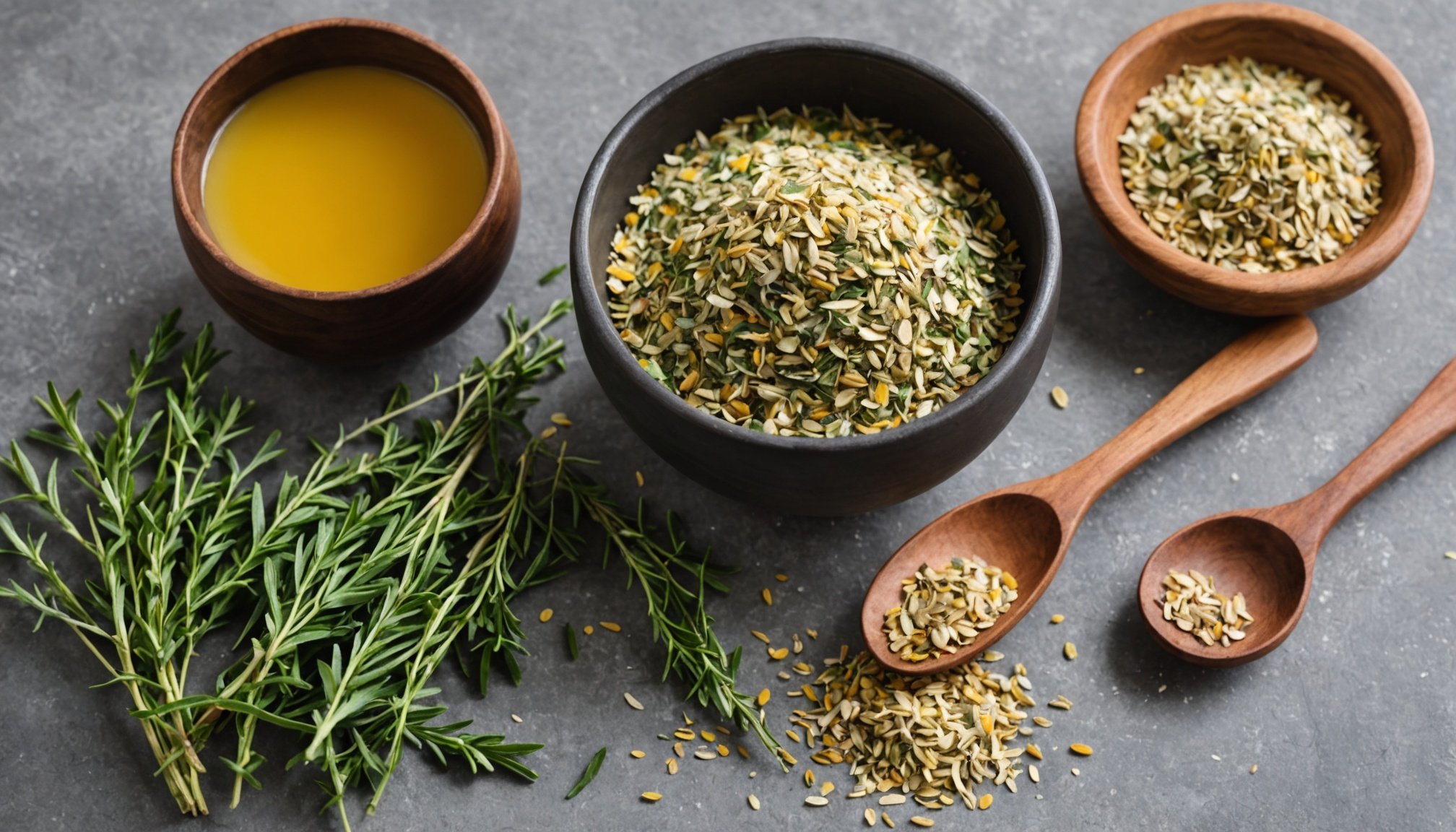Overview of Herbal Bath Soaks
Herbal bath soaks offer a delightful way to indulge in self-care. These soaks combine water with herbal ingredients known for their nourishing properties, creating a relaxing escape right in your own bathroom. But what exactly do these soaks do for you?
Herbal bath soaks serve multiple purposes, primarily focusing on skin hydration and revitalization. They are crafted using a selection of herbs and botanicals that infuse the bathwater with beneficial compounds. By soaking in this herbaceous blend, the skin can absorb these nutrients, promoting a healthier and more radiant appearance.
Also to discover : Ultimate Guide: Perfecting Sunscreen Application Before Makeup for Maximum UV Protection
The benefits of herbal ingredients for skin health are well documented. They can hydrate the skin, soothe irritation, and even offer anti-inflammatory effects. Ingredients like chamomile and lavender are known for their calming properties, while eucalyptus and mint can invigorate and energize.
Incorporating herbal bath soaks into your self-care routine not only enhances skin hydration but also supports overall wellness. As our lives get busier, taking time for such rituals can significantly contribute to our mental and physical revitalization, making these simple soaks a worthy addition to your self-care toolkit.
Additional reading : Ultimate Guide to Selecting the Perfect Compression Gear for Optimal Post-Workout Recovery
Key Ingredients for Your Custom Herbal Bath Soak
Creating a custom herbal bath soak involves selecting ingredients that offer exceptional skin benefits. Common herbs like chamomile provide soothing properties, perfect for irritated skin, while lavender promotes relaxation, ideal for bedtime routines. To invigorate and awaken senses, eucalyptus and mint are popular choices. Additionally, aloe vera offers incredible hydration, making it a must-have for those with dry skin.
When crafting your bath soak, opting for organic and high-quality ingredients ensures the best experience. These premium-quality herbs preserve more active compounds, enhancing their efficacy. While purchasing, be alert to reputable companies and reliable sources that prioritize quality.
Customizing your soak based on skin types and preferences offers a more personalized experience. For instance, sensitive skin can benefit from gentle calendula or oats, while oily skin may thrive with astringent herbs like witch hazel. For those desiring a luxurious soak, rose petals can provide a natural fragrance and skin-softening benefits.
By carefully selecting suitable ingredients for bath soaks, your self-care routine can be both rejuvenating and therapeutic, tailored to meet your specific skincare needs and preferences.
Sourcing Ingredients and Safety Considerations
Selecting the right ingredients for your DIY herbal bath soaks is crucial. Opting for natural ingredients sourced from reputable suppliers ensures not only the efficacy of the soak but also its safety. When purchasing, look for organic certifications and high-quality botanicals to guarantee that the active herbal benefits are retained.
Understanding potential skin sensitivities is essential before diving into herbal bath creation. Some individuals may have allergies to certain plants, so patch testing on a small skin area is advised. This precaution helps identify any adverse reactions to new ingredients.
When sourcing herbs, consider options like local health stores or online markets that provide transparency about their sourcing practices. Ingredients like chamomile, lavender, and eucalyptus are usually in high demand for their soothing and invigorating properties, respectively.
Incorporating safe practices, such as thoroughly researching each herb’s properties and potential interactions with medications, enhances your overall wellness experience. Herbal ingredients should always be stored in a cool, dark place to maintain their potency.
By being diligent about ingredient selection and aware of safety considerations, you can enjoy a worry-free, rejuvenating bath soak experience that’s both effective and aligned with your skincare needs.
Health Benefits of Herbal Bath Soaks
The benefits of herbal baths extend beyond simple leisure, offering a wealth of advantages for both mental and physical well-being. Herbal bath soaks have been known to deliver a soothing escape from daily stresses, creating an environment where you can unwind and rejuvenate. Such relaxation plays a key role in stress reduction, fostering a peaceful state of mind that contributes to overall well-being.
Incorporating relaxation techniques with bath soak use, such as deep breathing exercises or meditation, can amplify these stress-reducing effects. In addition, certain herbs used in these soaks, like chamomile and lavender, are known to promote calmness and diminish anxiety.
When it comes to skin health, herbal baths provide numerous therapeutic benefits. They can alleviate specific concerns such as dryness or irritation, owing to powerful anti-inflammatory and moisturizing properties found in herbs like aloe vera and calendula.
Furthermore, adapting these soaks for particular skin conditions allows for targeted therapy, offering relief for issues like eczema or psoriasis. Eucalyptus and peppermint can invigorate circulation, boosting skin vitality. By embracing the holistic benefits of herbal baths, you cultivate both a healthier body and a tranquil mind.
Step-by-Step Guide to Creating Your Herbal Bath Soak
Crafting your own herbal bath soak can be both rewarding and beneficial for your skincare routine. Start by gathering your ingredients. Opt for herbs known for their natural skincare properties, such as chamomile, lavender, and eucalyptus. A standard ratio is about 1 cup of mixed herbs to every gallon of water, but this can be adjusted based on personal preference.
Preparation Instructions
-
Select Your Base: Begin by selecting a base, such as sea salt or Epsom salt, known for its detoxifying effects.
-
Combine Ingredients: Mix 2 cups of your chosen salts with your selected herbs, ensuring an even distribution.
-
Customisation Tips: Add a few drops of essential oils for enhanced herbal benefits. Lavender oil can promote relaxation, while peppermint oil invigorates the senses.
Incorporation of Herbs
To ensure your herbs remain contained, place the mixture in a muslin bag or a tied-up cloth. This prevents loose herbs from drifting in your bath while still allowing their properties to infuse the water.
By following these steps, you create a DIY bath soak recipe tailored to your skin type and preferences, ensuring a deeply rejuvenating and personal experience.
How to Use Your Herbal Bath Soak for Maximum Benefit
Utilizing herbal bath soaks effectively requires understanding the best practices for maximum benefit. One primary approach is to ensure proper bath soak application. Start by filling your tub with warm, not scalding, water, as this enhances skin absorption without irritating the skin’s natural barrier.
To fully enjoy your bath soak, incorporate relaxation techniques such as deep breathing or soft music. These methods complement the calming effects of herbal ingredients, transforming bath time into a rejuvenating ritual. A soak of about 20 to 30 minutes is ideal, allowing ample time for your skin to absorb the herbal benefits.
When integrating bath soaks into your skincare routine, consider soaking in the evenings. This creates a relaxing end to your day and allows your skin to benefit from the hydration overnight. After your bath, pat your skin dry gently to retain moisture and apply a natural moisturizer for added skin hydration.
Additionally, make your bath soak part of a broader wellness routine, pairing it with herbal teas or meditation for a holistic approach to relaxation and skin care. By following these tips, you can enhance both your mental and physical wellness effectively.


